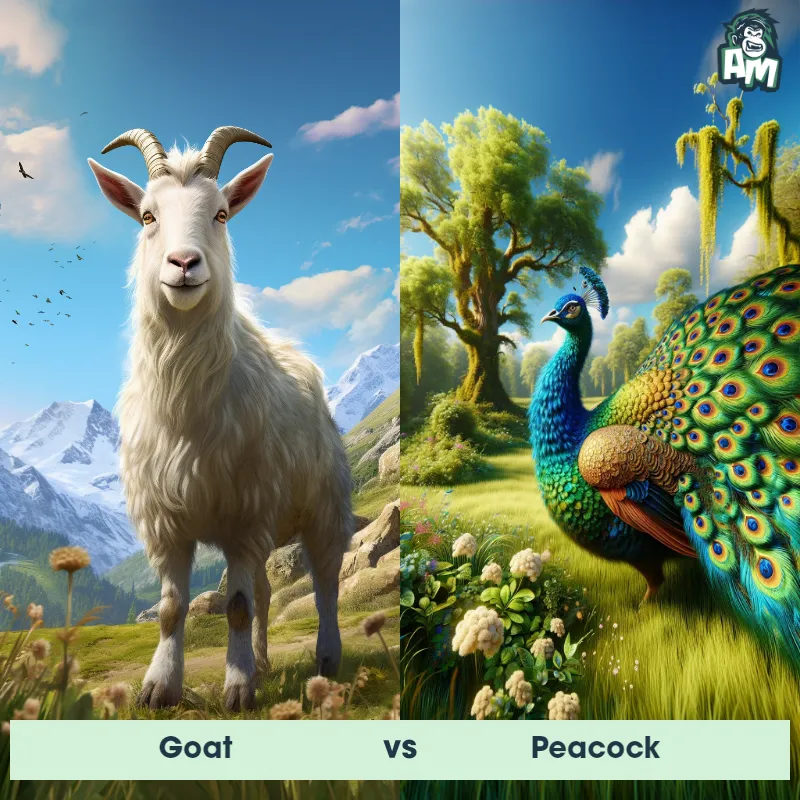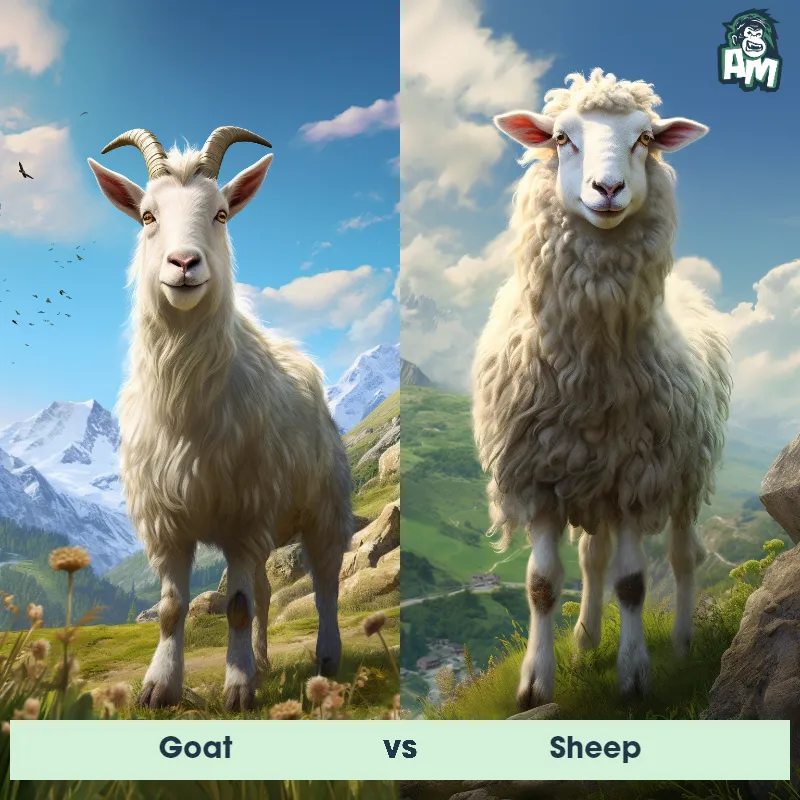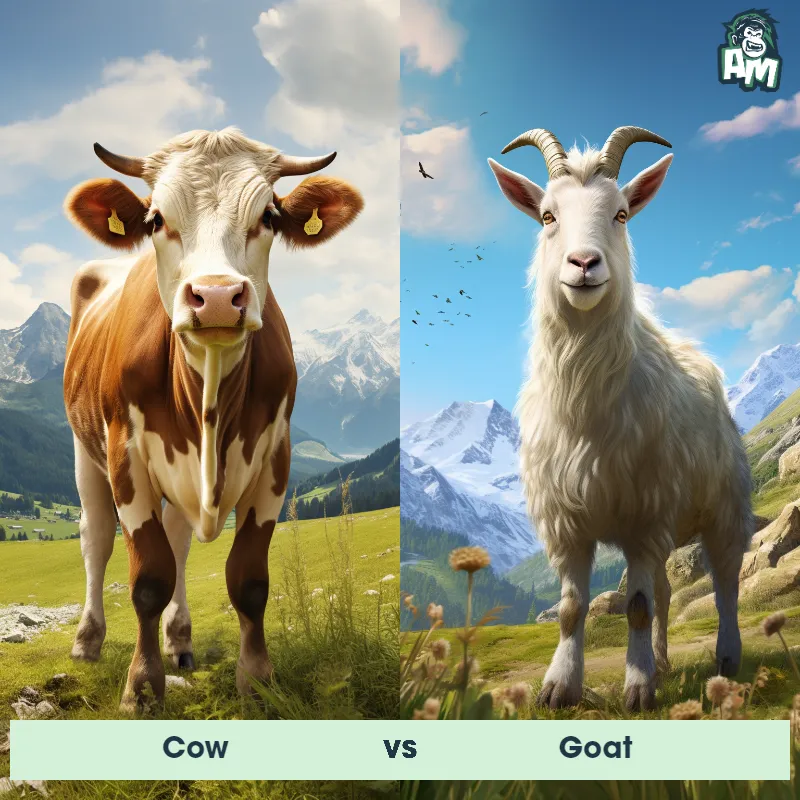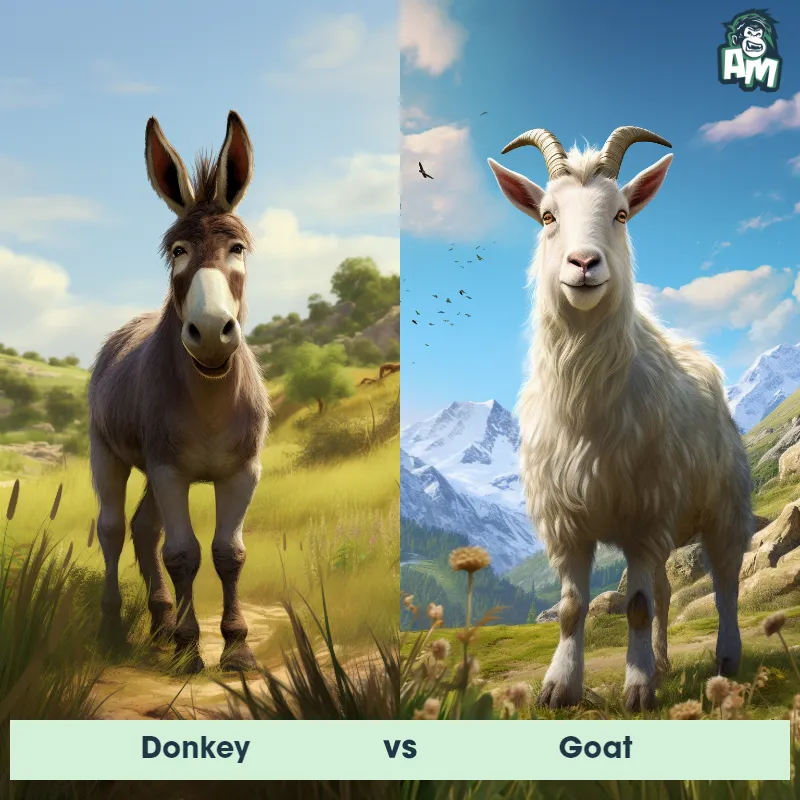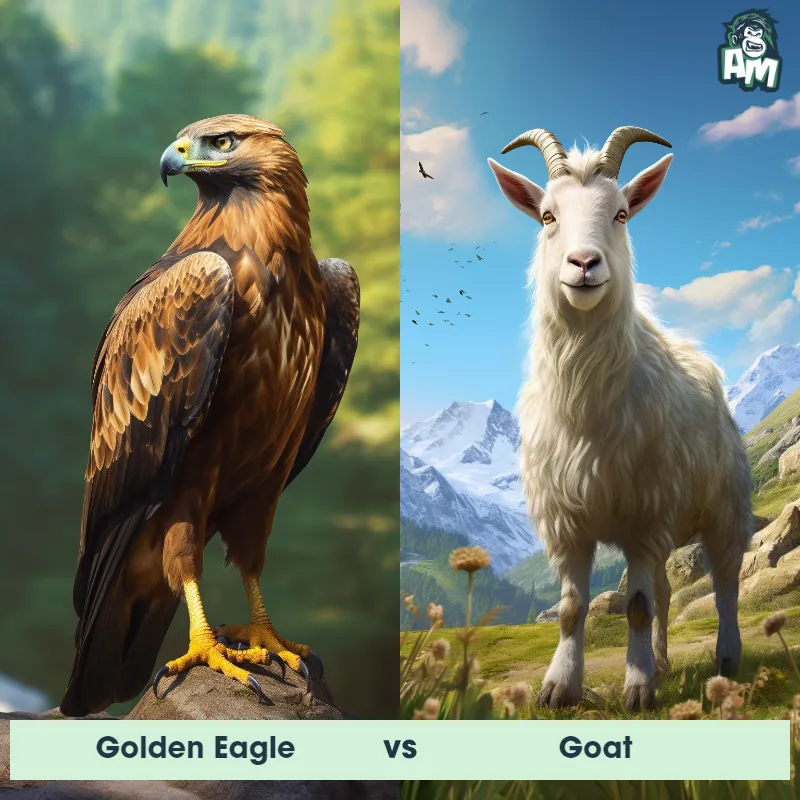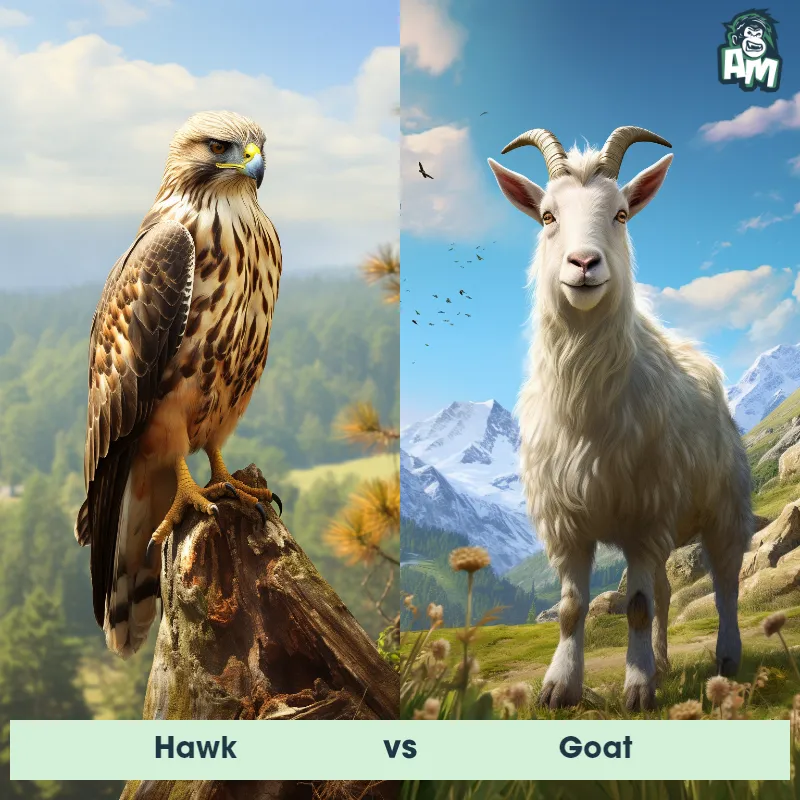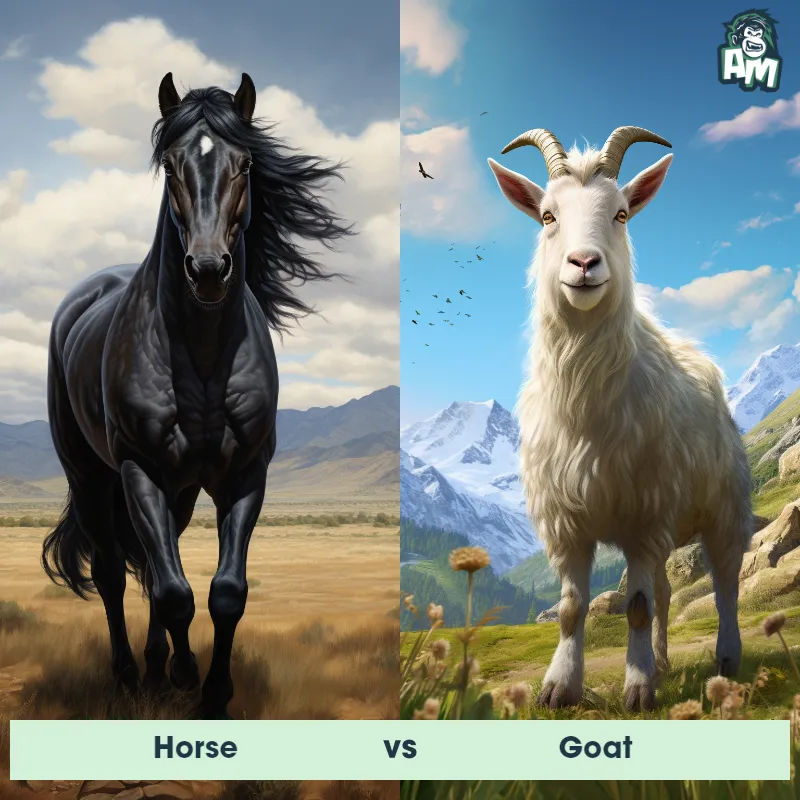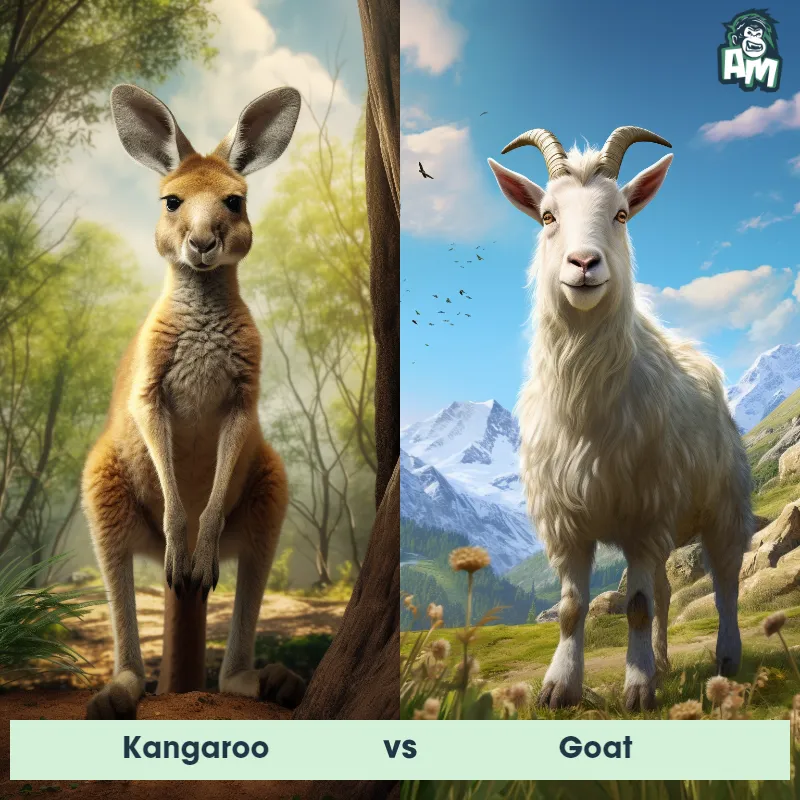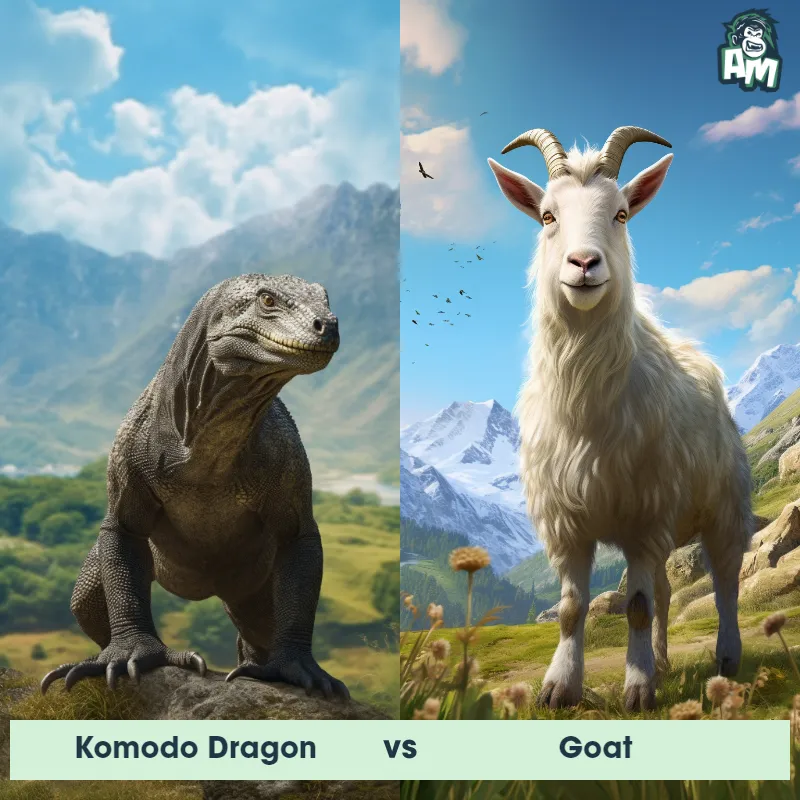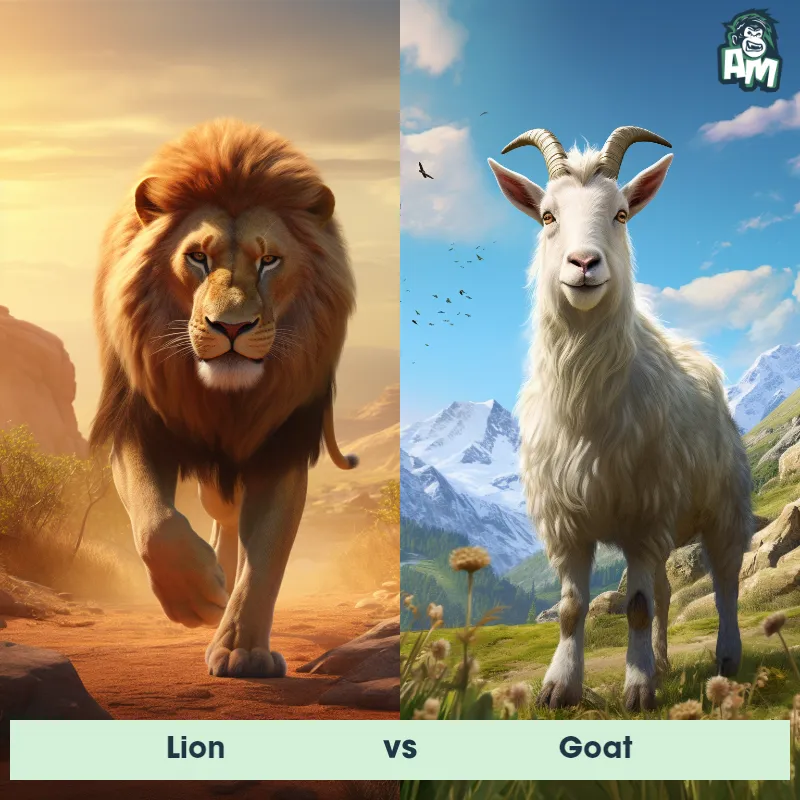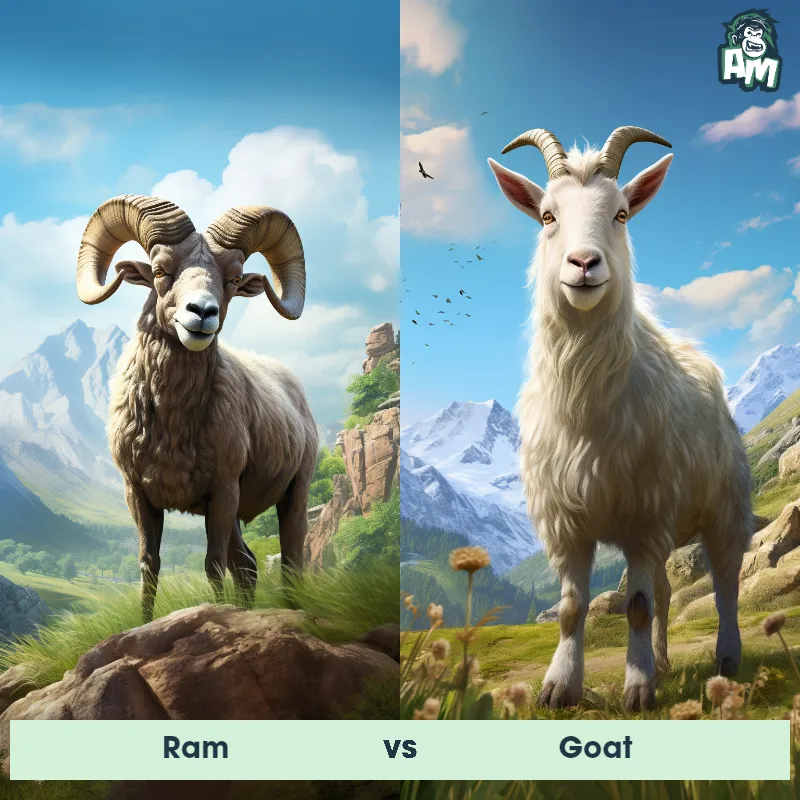The Goat
Goats are domesticated herbivorous mammals known for their versatility and resilience. They are characterized by their small to medium-sized bodies, with males bucks being larger than females does. Covered in thick and often curly, woolly or coarse hair, goats can come in various colors and patterns, including black, white, brown, and mixed. Most goats possess a pair of backward-curving horns on their heads, which vary in size and shape depending on the breed. They have horizontally slit pupils and rectangular pupils, allowing them to have excellent peripheral vision. Known for their agility, goats are adept climbers and jumpers, able to navigate steep and rocky terrain with ease. They are social animals that often form herds and communicate through various vocalizations, body language, and scents.
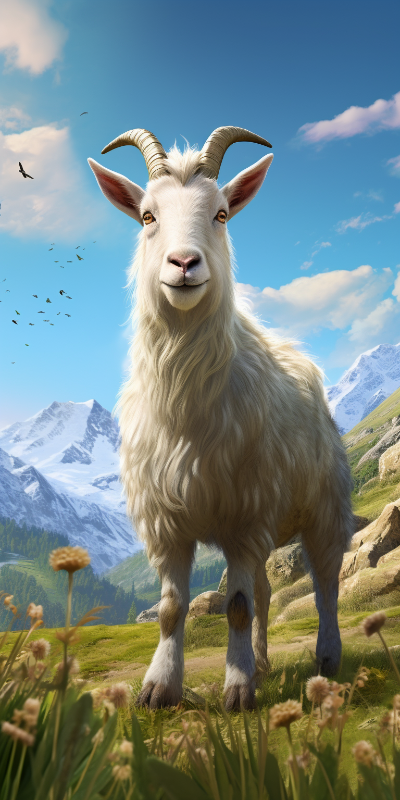
| Goat | |
|---|---|
| Size | 17-42 inches tall at the shoulder (43-107 cm) |
| Weight | 100-300 pounds (45-136 kg) |
| Speed | 15mph (24km/h) |
| Key Strength | Strong horns and agility |
| Biggest Weakness | Lack of size and strength compared to larger predators |
| Scientific Name | Capra aegagrus hircus |
| Family | Bovidae |
| Habitat | Mountainous regions, grasslands, forests, and deserts |
| Geography | Worldwide |
| Diet | Herbivore, eats grasses, shrubs, and leaves |
| Lifespan | 8 years - 18 years |

The Goat
Goats are domesticated herbivorous mammals known for their versatility and resilience. They are characterized by their small to medium-sized bodies, with males bucks being larger than females does. Covered in thick and often curly, woolly or coarse hair, goats can come in various colors and patterns, including black, white, brown, and mixed. Most goats possess a pair of backward-curving horns on their heads, which vary in size and shape depending on the breed. They have horizontally slit pupils and rectangular pupils, allowing them to have excellent peripheral vision. Known for their agility, goats are adept climbers and jumpers, able to navigate steep and rocky terrain with ease. They are social animals that often form herds and communicate through various vocalizations, body language, and scents.
Fun Fact: Goats have an extraordinary sense of balance, enabling them to climb trees and balance themselves on narrow ledges or rocky outcrops, as their hooves are designed to provide ample grip and traction, making them excellent climbers.
| Goat | |
|---|---|
| Size | 17-42 inches tall at the shoulder (43-107 cm) |
| Weight | 100-300 pounds (45-136 kg) |
| Speed | 15mph (24km/h) |
| Key Strength | Strong horns and agility |
| Biggest Weakness | Lack of size and strength compared to larger predators |
| Scientific Name | Capra aegagrus hircus |
| Family | Bovidae |
| Habitat | Mountainous regions, grasslands, forests, and deserts |
| Geography | Worldwide |
| Diet | Herbivore, eats grasses, shrubs, and leaves |
| Lifespan | 8 years - 18 years |
Goat Matchups
We use AI to simulate matchups between the Goat and other animals. Our simulation considers size, strength, and natural predatory behaviors to determine the most likely outcome.
Goat: Diet, Predators, Aggression, and Defensive Behaviors
What do goats eat?
Goats are herbivores and primarily graze on grass, leaves, and weeds. They also enjoy eating hay, grains, and some fruits and vegetables. Their diet is high in fiber and they require a constant source of fresh water.
Do goats have any predators?
Yes, goats have a variety of predators in the wild, including wolves, coyotes, mountain lions, and bears. Domestic goats are also at risk of predation from dogs, foxes, and birds of prey.
Are goats aggressive?
While goats are generally known to be curious and social animals, they can exhibit aggressive behavior, especially during mating season or when they feel threatened. Male goats, in particular, may be more territorial and display aggressive tendencies.
Do goats fight?
Goats are known to engage in playful behaviors such as head-butting, which can sometimes escalate into more serious fights, especially between males competing for dominance or mating rights. These fights are a natural part of their social hierarchy.
How do goats defend themselves?
When faced with a threat, goats have several defense mechanisms to protect themselves. They may use their horns to head-butt predators or rivals. They can also run away at high speeds, jump over obstacles, or seek refuge in difficult-to-reach areas.
What is goats' biggest weakness in a fight?
Despite their ability to defend themselves with their horns and agility, goats have a vulnerable spot that can be exploited in a fight – their sides. Goats have relatively thin skin and minimal protection on their flanks, making them susceptible to attacks aimed at their sides.
Fun Fact: Contrary to popular belief, goats are actually quite selective eaters, contrary to their reputation for being indiscriminate grazers. They are known to be picky when it comes to their food choices, often displaying a discerning palate and avoiding consuming plants that are harmful or unpalatable to them.
Fun Fact: Goats have rectangular pupils, which, along with their wide field of vision, provide them with an almost panoramic view of their surroundings, giving them a heightened sense of awareness and making it easier for them to detect potential predators.



